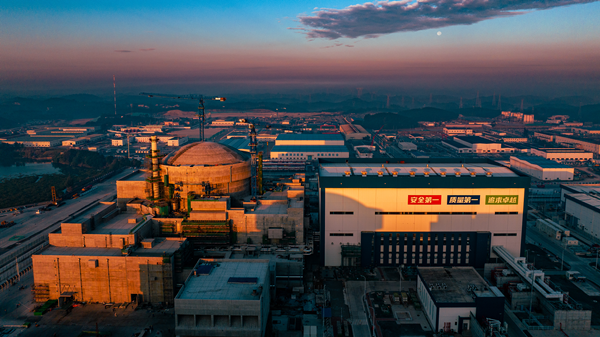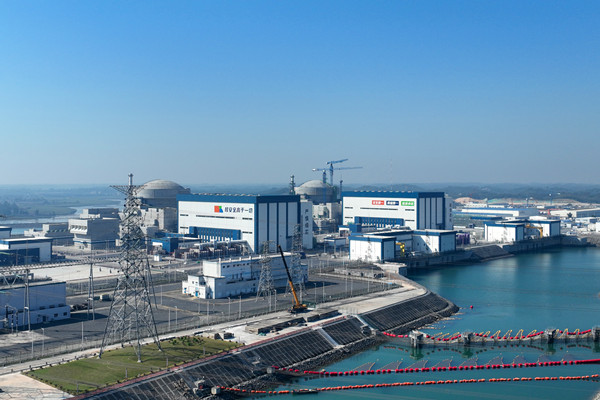The second Hualong One, a domestically designed third-generation nuclear reactor, was connected to the grid for the first time in China's Guangxi Zhuang autonomous region on April 9. It demonstrated its power generation capability and marked a crucial step toward commercial operation goal.

The Unit 4 of the Fangchenggang nuclear power plant [Photo/sasac.gov.cn]
The plant — also known as the Unit 4 of Guangxi Fangchenggang Nuclear Power Co Ltd, a subsidiary of the China General Nuclear Power Corporation (CGN) — will conduct a series of tests later to further verify various performances for commercial operation conditions, with high-quality production expected to be achieved in the first half of this year.
As the first nuclear power plant in the western China, the phase I project of the Fangchenggang nuclear power plant, with two units, commenced commercial operation in 2016. The first Hualong One in China's western region, the Unit 3 of the Fangchenggang nuclear power plant, started power generation on March 25, 2023, with reliable first-cycle operation and an annual capacity factor of 98.2 percent, setting a record for the best performance among domestic third-generation reactors.

Aerial view of the second Hualong One [Photo/sasac.gov.cn]
Currently, the three units of the Fangchenggang nuclear power plant in operation have accumulated more than 120 billion kilowatt-hours of electricity sent to the grid. Compared with coal-fired power plants of equivalent scale, this has effectively reduced coal consumption by over 36.24 million tons and reduced carbon dioxide emissions by approximately 98.88 million tons, equivalent to planting on 270,000 hectares of forests.
This achievement holds significant importance in practicing the country's dual carbon goals to peak carbon dioxide emissions before 2030 and achieve carbon neutrality before 2060, constructing a new energy system, optimizing the energy structure of Guangxi, and promoting the high-quality development of the regional economy and society.
(Executive editor: Zhu Zeya)